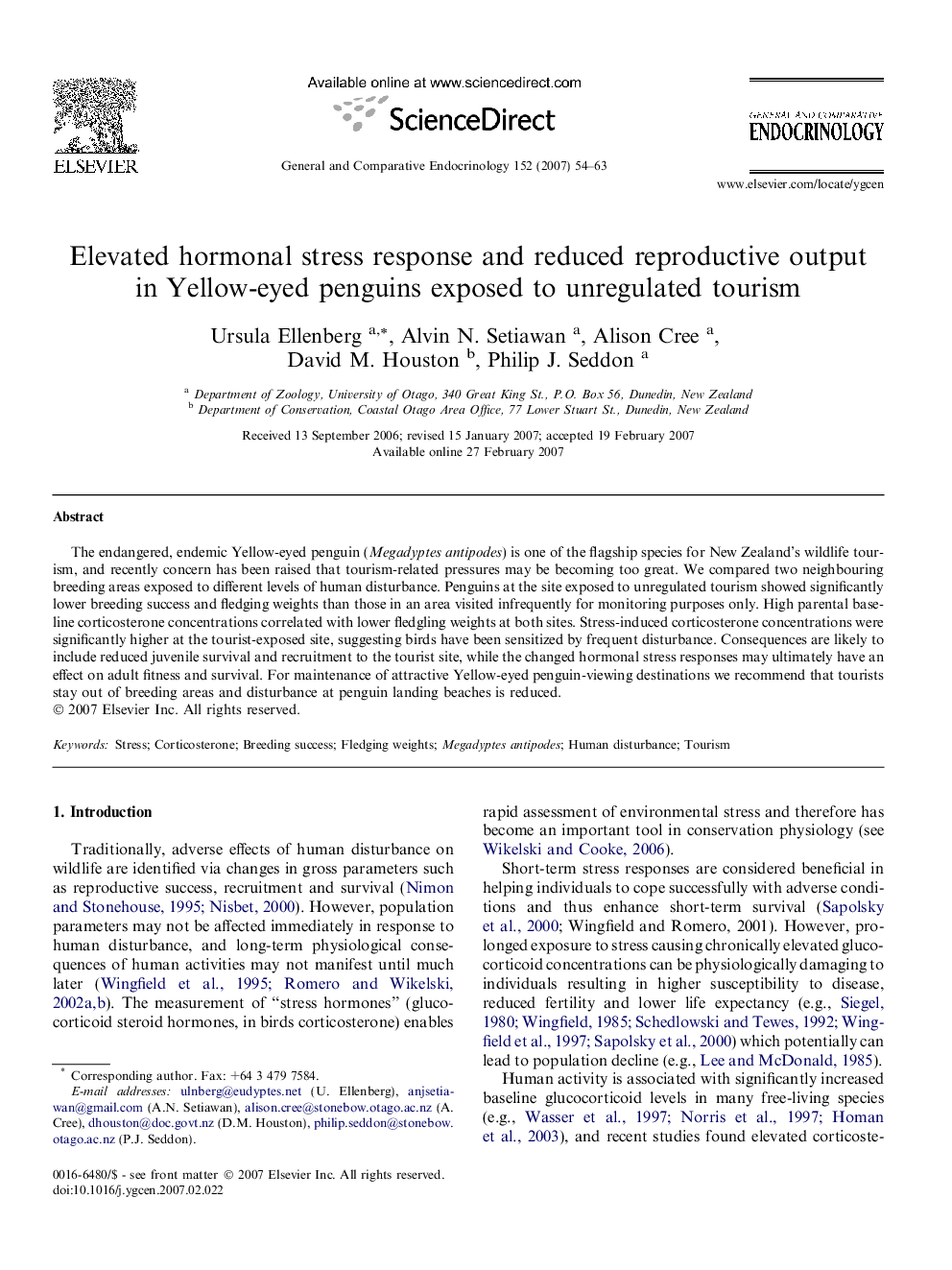| Article ID | Journal | Published Year | Pages | File Type |
|---|---|---|---|---|
| 2802019 | General and Comparative Endocrinology | 2007 | 10 Pages |
The endangered, endemic Yellow-eyed penguin (Megadyptes antipodes) is one of the flagship species for New Zealand’s wildlife tourism, and recently concern has been raised that tourism-related pressures may be becoming too great. We compared two neighbouring breeding areas exposed to different levels of human disturbance. Penguins at the site exposed to unregulated tourism showed significantly lower breeding success and fledging weights than those in an area visited infrequently for monitoring purposes only. High parental baseline corticosterone concentrations correlated with lower fledgling weights at both sites. Stress-induced corticosterone concentrations were significantly higher at the tourist-exposed site, suggesting birds have been sensitized by frequent disturbance. Consequences are likely to include reduced juvenile survival and recruitment to the tourist site, while the changed hormonal stress responses may ultimately have an effect on adult fitness and survival. For maintenance of attractive Yellow-eyed penguin-viewing destinations we recommend that tourists stay out of breeding areas and disturbance at penguin landing beaches is reduced.
